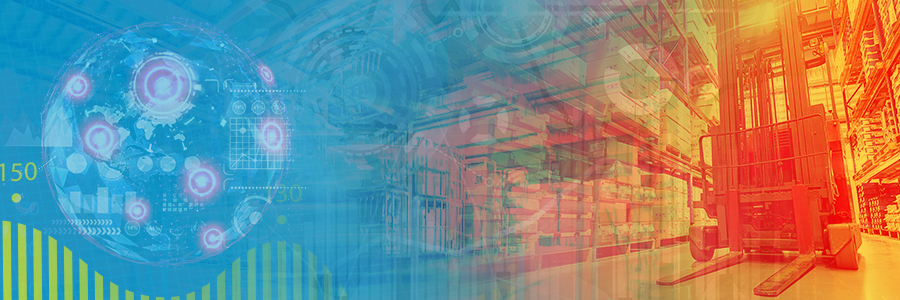
COVID-19 related disruptions have highlighted how some industries need to change how they prepare for interruptions to scheduled services. For consumers, confidence in the supply chain may soon outweigh price as a deciding factor when making purchases.
While countries around the world are at different stages in their pandemic response, most have recommended, if not required, a degree of self-isolation. Measures globally to flatten the curve, include: limiting group interactions, mandated work from home policies, closing down non-essential services, and shelter in place measures. A natural consequence of these social distancing limitations has been a 52% increase in online purchases from the same period a year ago.1 In China, where quarantine has been more strictly administered, one online retailer saw an increase of 215% in year-over-year grocery sales.2
To keep orders fulfilled, the transportation and logistics (T&L) industry is kicking into overdrive and working to protect frontline employees and mitigate delays, which will have a ripple effect on the economy.
Business Continuity, Managed Mobility
Modernizing the supply chain by incorporating technology has been a major focus within the T&L industry for decades. Even before working from home became a mandated policy for many companies, the industry was experiencing increasing reliance on mobile devices and apps to improve customer service, reduce costs and increase productivity.
Now, we're seeing an even greater increase in the adoption of new mobile and IoT technology, across numerous industries, from companies quickly figuring out how to adapt efficiently during a climate of uncertainty. A business-critical mobility strategy is now at the forefront, the backbone responsible for ensuring global organizations can remain connected, without major disruptions in services, and with as little face-to-face and direct contact as possible.
However, the downside of more mobile devices and apps is an increase in management complexity, and all the factors that contribute to it, including: security, remote support, app and content distribution, privacy and mobile device analytics. With an integrated mobility strategy designed to optimize the management of all mobile devices in one seamless platform, T&L companies can eliminate these risks and quickly adapt to their new normal.
The T&L industry was already decentralized and reliant on early, system-wide adoption of mobile tools that would help to ease the burden on manual reporting and tracking. As workloads increase with demand, having automated reporting systems that display updated, real-time inventory information will become more pressing. Continuity of service for clients and customers during this time will be improved through a deepening of remote access and service capabilities. Ensuring secure connections and storage of data has always been a top priority and will now prove vital.
Those lagging in adopting further tech advances from mobile inventory management on vehicles to real-time location status, will need to close the technology gap smartly and efficiently to stay competitive. How companies learn to quickly adapt in the coming weeks will indicate how well they are able to weather further changes to “business as usual.”
How Transportation and Logistics Companies Can Adapt with Mobile Technology
Mobile technology remains a lifeline for many industries. T&L companies can stay safely connected remotely through a well-integrated, reliable mobile network. It’s important that T&L companies have the right tools to effectively manage remote access and control into mobile devices, and be able to diagnose and remediate device issues to ensure their workers can keep working, even if they’re at home.
In response to an upended norm due to COVID-19, the first things T&L companies can do is fully leverage the existing technology in place, then determine what strategies and tools they need to adopt that would enable their existing technology to support their digital and distributed business. Next, companies should implement redundancy plans and protocols, so that when they are needed to be called upon, there is not a last minute scramble to develop policies. They need a clearly outlined set of next steps, defined roles and responsibilities for every level within the organization to know where they fit when contingency strategies have to be deployed.
Electronic Logging Devices (ELD) should be fully optimized to connect vehicles to one another, optimize routes, alleviate distracted driving concerns, and ensure safety and compliance, while all are working under heightened scrutiny and pressure. During this busy period, further integrating fleets by replacing handheld devices with wearables like smart glasses or watches will allow for handsfree and disruption-free activity, which could be directly translated into time and cost savings.
For SOTI customers, this means leveraging the support of SOTI’s extensive IT infrastructure that allows for mobile and IoT devices to be securely managed, diagnosed and troubleshooted remotely. Sharing data insights will also provide intelligent analysis that can be shared throughout the network. More information provides more insight.
Communication is Key
T&L companies have to consider every touchpoint along their pipeline. This means ensuring that clear messaging to customers and partners should be of top priority. If the end user who is ultimately receiving the package does not believe in the safety and security of what is being delivered, then regardless of what steps are being taken along the delivery chain, companies’ bottom lines will be impacted.
For our community in the T&L industry, our message is clear. SOTI can enable your business to gain end-to-end supply chain visibility and improve your ability to adapt to unexpected disruptions to your operations. The SOTI ONE Platform was designed to help you eliminate mobile device downtime, keep your drivers safe every step of the way, track your corporate assets and maintain an efficient supply chain.
As we are still in the early stages of this global pandemic, short term planning is even more important than ever. Companies are going to have to consider the possibility of being in a protracted state of disruption for an unforeseeable future. Where possible, companies must adapt. Uncertainty breeds confusion, which breeds panic. Mobile and remote connectivity will help to ease some of that panic. Providing frequent updates, sharing concise communication and having a clear strategy for continuation of services will prove profitable.
1. Yahoo! Finance, 6 E-commerce Stocks to Gain as Coronavirus Boosts Online Orders, March 2020.
2. Yahoo! Finance, 6 E-commerce Stocks to Gain as Coronavirus Boosts Online Orders, March 2020.



